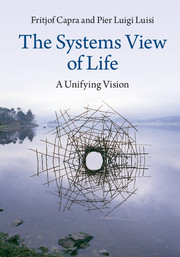Book contents
- Frontmatter
- Dedication
- Contents
- Preface
- Acknowledgments
- Introduction Paradigms in science and society
- I The mechanistic worldview
- II The rise of systems thinking
- III A new conception of life
- 7 What is life?
- 8 Order and complexity in the living world
- 9 Darwin and biological evolution
- 10 The quest for the origin of life on Earth
- 11 The human adventure
- 12 Mind and consciousness
- 13 Science and spirituality
- 14 Life, mind, and society
- 15 The systems view of health
- IV Sustaining the web of life
- Bibliography
- Index
7 - What is life?
from III - A new conception of life
Published online by Cambridge University Press: 05 April 2014
- Frontmatter
- Dedication
- Contents
- Preface
- Acknowledgments
- Introduction Paradigms in science and society
- I The mechanistic worldview
- II The rise of systems thinking
- III A new conception of life
- 7 What is life?
- 8 Order and complexity in the living world
- 9 Darwin and biological evolution
- 10 The quest for the origin of life on Earth
- 11 The human adventure
- 12 Mind and consciousness
- 13 Science and spirituality
- 14 Life, mind, and society
- 15 The systems view of health
- IV Sustaining the web of life
- Bibliography
- Index
Summary
How to characterize the living
It is a common understanding that it is impossible to provide a scientific definition of life which is universally accepted. This stems from the fact that the background of scientists dealing with the question – biologists, chemists, computer scientists, philosophers, astrobiologists, engineers, theologians, social scientists, ecologists (just to cite a few) – differs considerably from one another, depending on one's conceptual framework. In this book, we will not dwell so much on the question of a unique definition of life – a single sentence catching all the various aspects of life – but rather, we will consider the more general question: what are the essential characteristics of a living system? This task is more amenable to a scientific inquiry, and we will show that the systems view of life represents a step forward within the horizon of the life sciences. In doing that, we will rely in good part on the conceptual scheme of the autopoiesis theory, as developed by Humberto Maturana and Francisco Varela (1980/1972, 1980). These are two Chilean biologists whose school is often referred to as the “Santiago school.” Maturana is the senior scientist, and Varela was his student and later his colleague at the University of Santiago de Chile. Francisco, to whom we have dedicated this book, died prematurely in 2001; Humberto is presently still very active in Santiago.
Maturana had become famous already in the early 1960s for his work on the frog retina, which was the seed for his later work on visual perception and cognition. Both scientists are famous mostly for the theory of autopoiesis, which responds to the general and ambitious question “What is life?” by specifying how to characterize the living organism from a merely biological and phenomenological point of view, starting from the uniqueness of the biological cell. “Autopoiesis” is a term coined by Maturana and Varela in the 1970s. Auto, of course, means “self” and refers to the autonomy of self-organizing systems; and poiesis (which shares the same Greek root as the word “poetry”) means “making.” So, autopoiesis means “self-making”.
- Type
- Chapter
- Information
- The Systems View of LifeA Unifying Vision, pp. 129 - 143Publisher: Cambridge University PressPrint publication year: 2014



